Current Project Categories (2021):
There are currently 8 active graduate students in the Tribomechadynamics lab, that are overseeing both their own research projects as well as multiple undergraduate research projects. The current graduate research projects are categorized as Tribology/Contact Mechanics projects, Nonlinear Dynamics projects, and Tribomechadynamics projects:
Tribology/Contact Mechanics. There are three graduate research projects in this area: understanding the wear evolution of jointed structures over time, modeling the delamination of thermal spray coatings, and studying the damage properties of laminate composites.
Nonlinear Dynamics. There are twograduate research project in this area: integrating machine learning and nonlinear system identification and new computational tools for multi-scale dynamic analyses.
Tribomechadynamics. There are three graduate research projects in this area: creating a Tribomechadynamic modeling framework for jointed structures, structural health monitoring with a Tribomechadynamics framework, and integrating Tribomechadynamics with topology optimization.
General projects for all levels of researchers typically include:
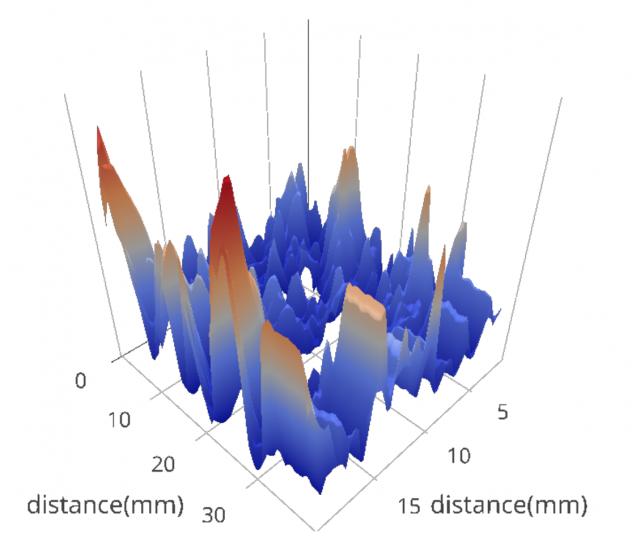 Wear Analysis
Wear Analysis
As the Tribomechadynamics Lab delves deeper into Tribology, one central theme in our research is understanding how the wear characteristics of a system evolve over time, and how we can develop improved, macroscale models to account for this evolution. This research is rooted in a macroscale experiment to initiate and drive wear in an interface coupled with micro- and nano-scale tools to study the wear scars, changes in an interface over time, and the dissipative characteristics of a system.
Contact Mechanics Modeling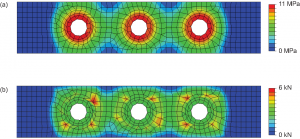
Numerical model development for quasi-static and dynamic analysis of assembled structures. Current research is focused on the use of quasi-static modal analysis for parameter calibration, development of more accurate constitutive models, and improvements in numerical solvers for more efficient simulations.
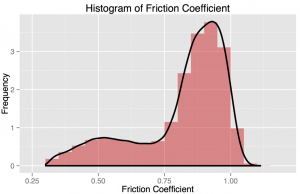 Uncertainty Quantification for Friction Test Data
Uncertainty Quantification for Friction Test Data
Currently, there is no observed correlation between surface roughness and the parameters used to fit a constitutive model to measurements of interfacial contact forces. This research seeks to understand the role of the constitutive model in the correlation (or lack thereof) between roughness properties and model parameters in an effort to provide realistic sets of parameters for describing surfaces used in benchmark studies.
Impact Dynamics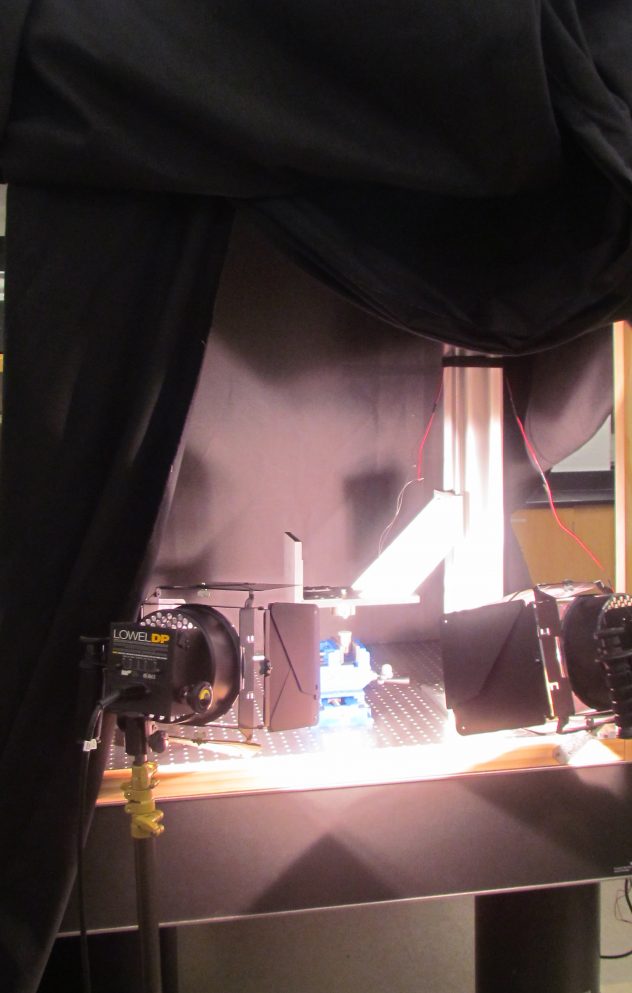
We have multiple concurrent impact dynamics projects in the lab at this time. Using our newly developed drop tower and electromagnetic canon, we are developing a new model of indentation including pile-up, extending our recent strain hardening models to rough contact, investigating the effect of oblique impacts, and studying the effects of lubrication on contact stresses and damage.
 Coatings and Composites
Coatings and Composites
While coatings and composites are two distinct research areas, the central question applied to both is: How can we predict the properties of a system composed of multiple materials (particularly when one set of materials is very small compared to a larger substrate)? How can we predict delamination and failure of the materials? How can we engineer the materials to have desirable properties?
Nonlinear Dynamics Measurements
Experimental investigations of the response of jointed structures in terms of their amplitude dependent stiffness and damping. Specific research includes studying the effects of material structure on measured properties.
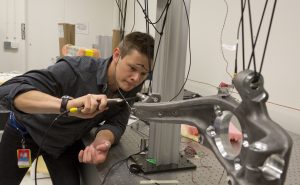 Experimental Modal Analysis
Experimental Modal Analysis
The introduction to experimental work in the Tribomechadynamics Lab begins with operational modal analysis, which is the experimental study of the vibration properties of linear systems. Current work is focused on developing capabilities to support a project related to work in Rice University’s Eclipse Club (for rocketry).